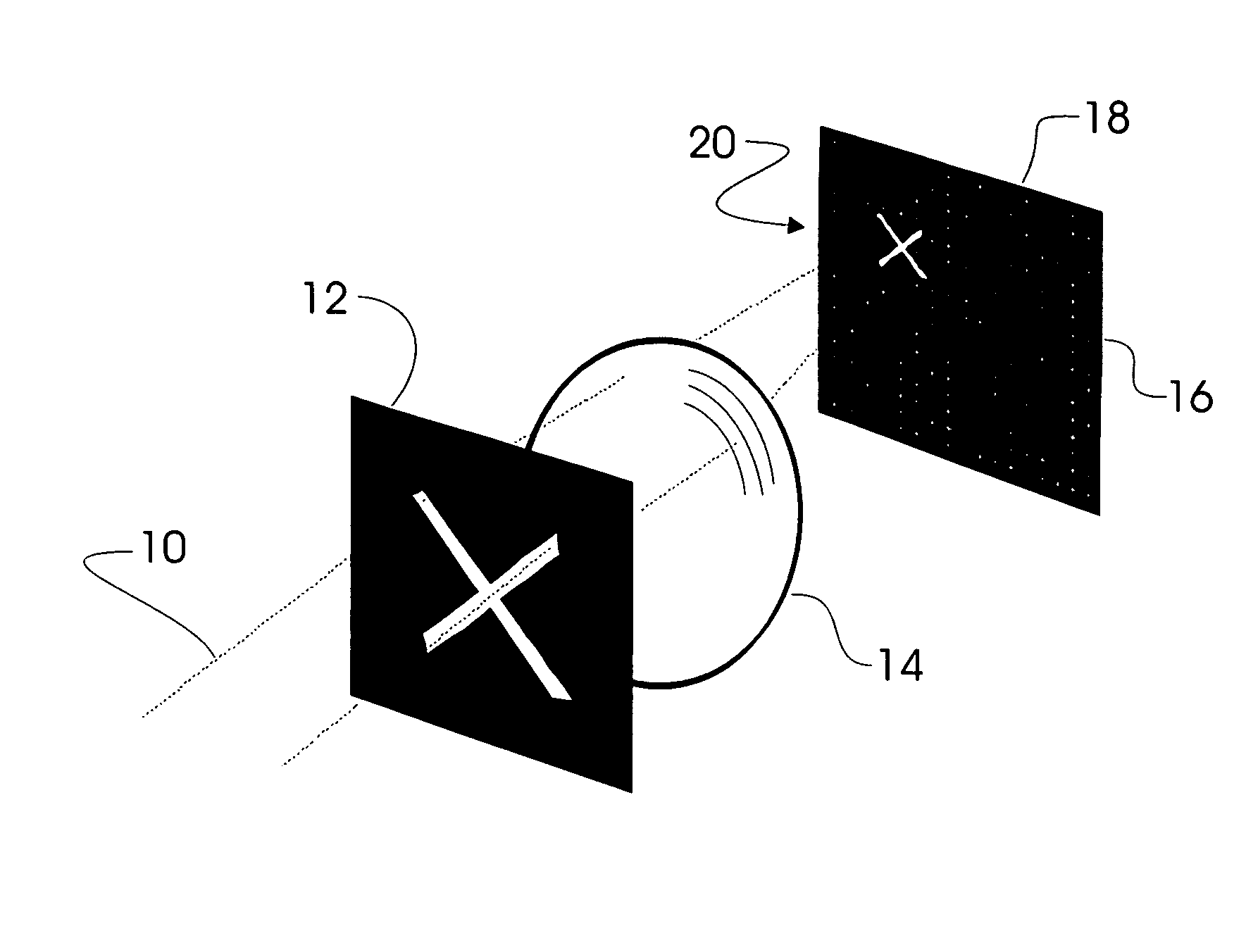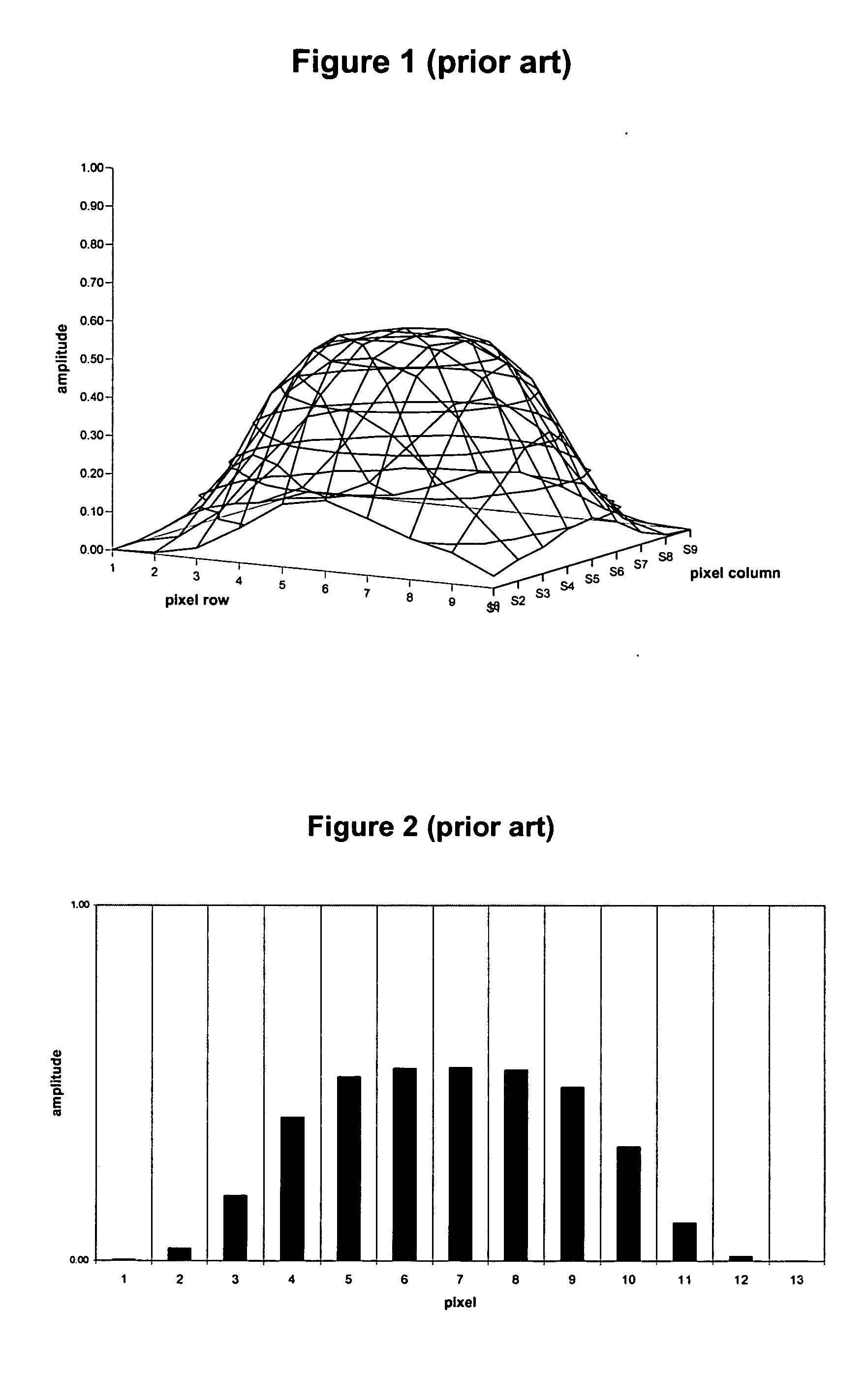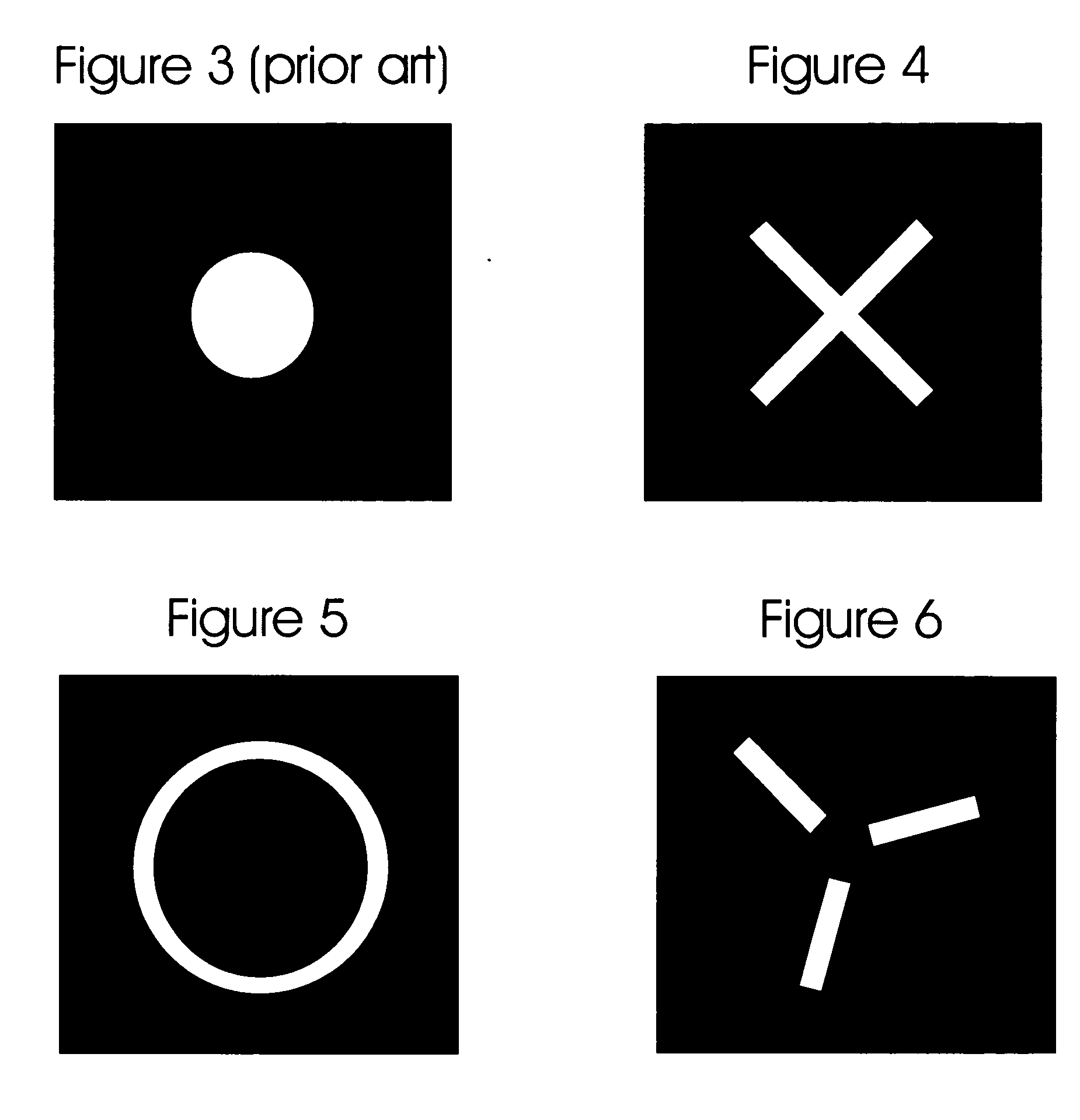Shaped blurring of images for improved localization of point energy radiators
a technology of point energy radiators and blurring, applied in the field of metal systems, can solve the problems of reducing the signal-to-noise ratio, reducing the intensity of the image, and undesirable poor focus or intentional blurred image, so as to improve the sub-pixel accuracy in the determination and enhance the computing
- Summary
- Abstract
- Description
- Claims
- Application Information
AI Technical Summary
Benefits of technology
Problems solved by technology
Method used
Image
Examples
Embodiment Construction
[0040] The invention in many respects is similar to a standard digital or video camera—one or more of which are part of a metrology system accurately determining the location(s) of one or more tiny radiators of light (or other energy). Multiple such energy radiators attached to a (rigid) body can then be used to track the location and orientation of the body or of distinguished parts or points of the body—preferably in real time. The present invention provides an improvement to such a system. The invention's principal elements are depicted in the simplified perspective drawing of FIG. 7.
[0041] The invention according to the preferred embodiment uses a aperture 12 such as one of those shown in FIGS. 4 through 7 and preferably uses a lens system 14 which introduces a controlled amount of blur or consistent aberration into the image 20 of a point radiator of energy. This blurring may be accomplished simply by focusing the lens for a distance nearer than the volume in which the point r...
PUM
 Login to View More
Login to View More Abstract
Description
Claims
Application Information
 Login to View More
Login to View More - R&D
- Intellectual Property
- Life Sciences
- Materials
- Tech Scout
- Unparalleled Data Quality
- Higher Quality Content
- 60% Fewer Hallucinations
Browse by: Latest US Patents, China's latest patents, Technical Efficacy Thesaurus, Application Domain, Technology Topic, Popular Technical Reports.
© 2025 PatSnap. All rights reserved.Legal|Privacy policy|Modern Slavery Act Transparency Statement|Sitemap|About US| Contact US: help@patsnap.com



